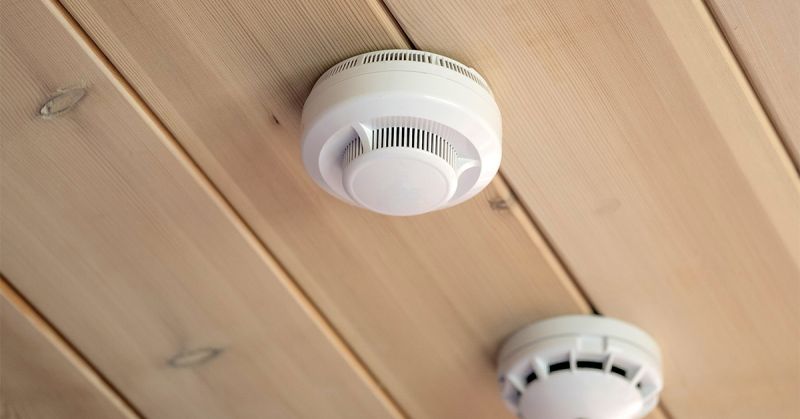
Why Every Home Needs Smoke and Carbon Monoxide Detectors
U.S. fire departments respond to about 350,000 residential home fires every year, according to the National Fire Protection Association (NFPA). These fires cause an estimated annual 2,600 deaths and more than 11,000 injuries, which would be far more significant in the absence of residential smoke detectors. According to the NFPA, over 40% of fire-related fatalities occur in homes lacking operational smoke detectors.
Meanwhile, the Centers for Disease Control and Prevention reports that carbon monoxide poisoning kills more than 420 Americans annually and injures more than 100,000, with the bulk of fatalities and injuries attributed to home heating emissions. While carbon monoxide sensors have not yet experienced widespread home installation as smoke-detecting devices, evidence suggests that their advanced warning saves lives.
To optimize household safety, Meeks Electrical Services urges its Tallahassee-area clients to assess their homes for these vital warning systems. Homeowners should ensure these detectors are correctly installed and conduct regular testing and maintenance on them. Below, we’ve included more information on smoke and carbon monoxide detector installation, testing, maintenance, and replacement.
What You Need to Know About Smoke Detectors
While smoke and fire detection technology patents were first issued in 1890, due to high costs, commercial adoption of household smoke detectors only really emerged in the 1970s, when annual sales started exceeding 100,000. Over the ensuing decades, cost-cutting technological innovations and government mandates boosted installations, and detectors are now found in most U.S. homes. From a regulatory standpoint, state laws and local building codes now require that all homes have smoke detectors, and the NFPA estimates that 96% of U.S. homes do.
Smoke detectors rely on two different technologies and can either be battery-operated or hardwired into the home’s electrical system, though most state laws and area building codes require hardwired detector installation in new homes. Photoelectric detectors rely on light rays to identify smoke particulates when they decrease the light’s illumination. Ionization detectors measure changes to electronically charged ion particles in the air, which become imbalanced in the presence of smoke. While photoelectrical sensors better detect slow-growing smoldering fires, ionization detectors react faster to fires that accelerate and grow quickly. The National Institute of Standards and Technology has determined that both types provide households enough time to escape typical residential fires.
The biggest difference between hardwired and battery-operated detectors is power and price. The latter is a more expensive option powered by household electricity and a backup battery in case of a power outage. While battery-operated detectors are less expensive, they are not considered as reliable. Unlike hardwired detectors, they cannot be interconnected to ensure that an alarm will be transmitted throughout the house, and battery issues may cause them to malfunction.
Depending on the model, smoke detectors warn household residents about potential fires with audible tones, spoken voice alerts, visual strobe lights, emergency lighting, or a combination. Some hardwired systems connected to a home security service that will alert the local fire department.
According to minimum standards set by the NFPA, at least one smoke detector should be placed on each floor level, one in each bedroom, and one in each bedroom hallway. NFPA recommends keeping smoke alarms at least 10 feet away from appliances to avoid false alarms.
Understanding Carbon Monoxide Detectors
Carbon monoxide (CO) is an odorless, colorless, poisonous gas that can be accidentally produced in the home by incomplete burning of heating fuels or improper inside usage of generators, gas stoves, gasoline engines, portable space heaters, and other equipment. Elevated CO levels in the home can cause acute sickness, with prolonged or excessive exposure leading to death.
Like smoke detectors, CO detectors alert household residents about the potential danger before it causes harm. CO detectors rely on several different technologies—electrochemical, biomimetic, semiconductor, and opto-chemical— to monitor the chemical composition of household air and trigger an alert in the presence of elevated gas levels. Detectors include hard-wired, battery-operated, and plug-into-outlet models, with most hard-wired models including a backup battery and offering interconnection for enhanced safety.
NFPA standards recommend that CO detectors be placed on each floor level and outside every sleeping area. Florida law mandates their placement in newly constructed buildings that have fossil-fuel heating and/or appliances, fireplaces, an attached garage, or any features that may emit carbon monoxide.
Testing, Maintaining, and Replacing Your Detectors
Safety experts recommend that homeowners test their smoke and CO detectors every month by pressing each device’s test button. Interconnected devices should set off all detector alarms in the home when tested. A test failure may indicate the need for battery or unit replacement. If battery replacement fails to correct the test failure in a hardwired system, you should contact your electrician.
Beyond occasional vacuuming of dust and cobwebs from units, smoke and CO detector maintenance is limited to battery replacement. Instead of relying on test failures, the NFPA recommends annual battery replacement. Detector components naturally degrade over time, so most smoke detector units should be replaced every 10 years, while CO detectors have an operational life expectancy of between five to seven years, depending on the model.
Consult with Meeks for Your Wiring Needs
If you want to optimize your household’s safety with a new hardwired smoke and CO detector system, or otherwise have problems with your existing detectors, contact the experts of Tallahassee’s Meeks Electrical Services. We offer services for all residential electrical needs, and can be reached at (850) 575-5241.